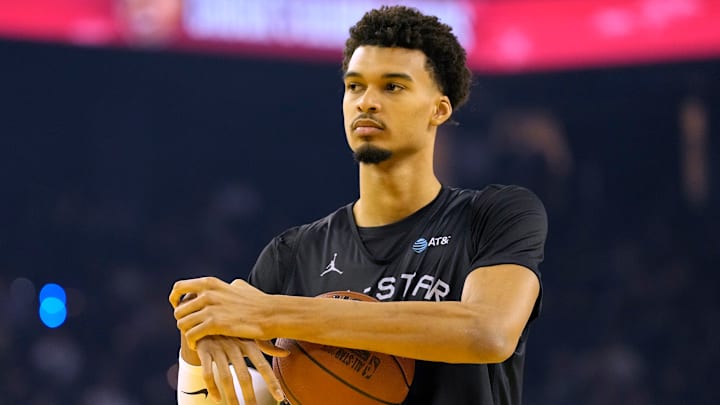The NBA world was knocked for a loop on Thursday afternoon, when the San Antonio Spurs announced that French phenom Victor Wembanyama would miss the remainder of the 2024-25 season due to deep vein thrombosis in his right shoulder. The issue was discovered after Wembanyama returned to Texas after participating in All-Star Weekend in the Bay Area.
— San Antonio Spurs (@spurs) February 20, 2025
Wembanyama has already blossomed into one of the young faces of the league, a combination of size and skill that we simply haven't seen before. The 21-year-old was averaging 24.3 points, 11.0 rebounds, 3.7 assists and a league-leading 3.8 blocks per game this season, shooting 47.6 percent from the floor and 35.2 percent from deep. After a star turn at the Paris Olympics last summer, it seemed like Wemby was blossoming into one of the best players in the sport in real time, making good on years of hype in record time. Now, that hype has been put on hold.
But for how long? This isn't a diagnosis that comes around every day, and fans around the league have plenty of questions about what it means for Wembanyama's health and his return to the court. Let's look at just what exactly deep vein thrombosis is, and what previous instances of it in the NBA can tell us.
Subscribe to The Whiteboard, FanSided’s daily email newsletter on everything basketball. If you like The Whiteboard, share it with a friend! If you don’t like it, share it with an enemy!
What is deep vein thrombosis?
Deep vein thrombosis is, essentially, a blood clotting issue in one of the deep veins of the body. It usually occurs in the lower extremities, but in Wembanyama's case it's developed in his right shoulder.
It goes without saying that blood clots are a very serious issue, one that can have dire consequences if left untreated. The first order of business will be to treat the clot in Wemby's shoulder, a process that requires him to avoid physical activity like a basketball game. (Treating blood clots typically requires blood thinners, which create a higher risk of bruising and bleeding.) From there, the prognosis depends on whether the clot was an isolated issue or part of a recurring problem.
The Spurs are insisting that Wembanyama's case is the former, in which case, recent NBA history tells us that he should be back on the court next season as dominant as ever.
What NBA's history with deep vein thrombosis tells us about Victor Wembanyama's timeline
Ausar Thompson
Thompson wasn't dealing with deep vein thrombosis specifically, but he's the most recent instance of an NBA player missing time due to a blood clot. The young Detroit Pistons wing was diagnosed in late March of last year, and missed the rest of the 2023-24 season while the clot was dealt with. He made his return to the court back in November and has been a solid member of Detroit's rotation ever since, with no reoccurrences to date.
Brandon Ingram
Ingram was diagnosed with deep vein thrombosis, and like Wembanyama, he dealt with it in his upper body: his right arm, specifically. The issue popped up in the spring of 2019, when he was still a member of the Los Angeles Lakers. Like Wemby, Ingram was shut down for the rest of that season.
And like Thompson, Ingram was able to rebound without much issue. The clot turned out to be an isolated event, and Ingram enjoyed a breakout season in 2019-20 after being dealt to the New Orleans Pelicans, earning his first All-Star nod in addition to Most Improved Player honors. While Ingram has dealt with health issues since then, none of them have been related to blood clots.
Chris Bosh
The most famous instance of deep vein thrombosis in the NBA is without question Bosh, whose career was cut short in the spring of 2016 due to a blood clot in his leg — the second time the star big man had dealt with a clotting issue over the course of his career. Bosh attempted to return to the court that fall, but the blood clots returned, and eventually the league's fitness panel ruled that it was a career-ending condition.
Bosh disagreed with that assessment, not technically retiring until the spring of 2019 amid multiple unsuccessful comeback attempts. This underscores just how positive it is that, at least for now, the Spurs view Wembanyama's blood clot as an isolated incident. If it is, it's something that he can treat and move beyond. If not, it could eventually threaten his career.
